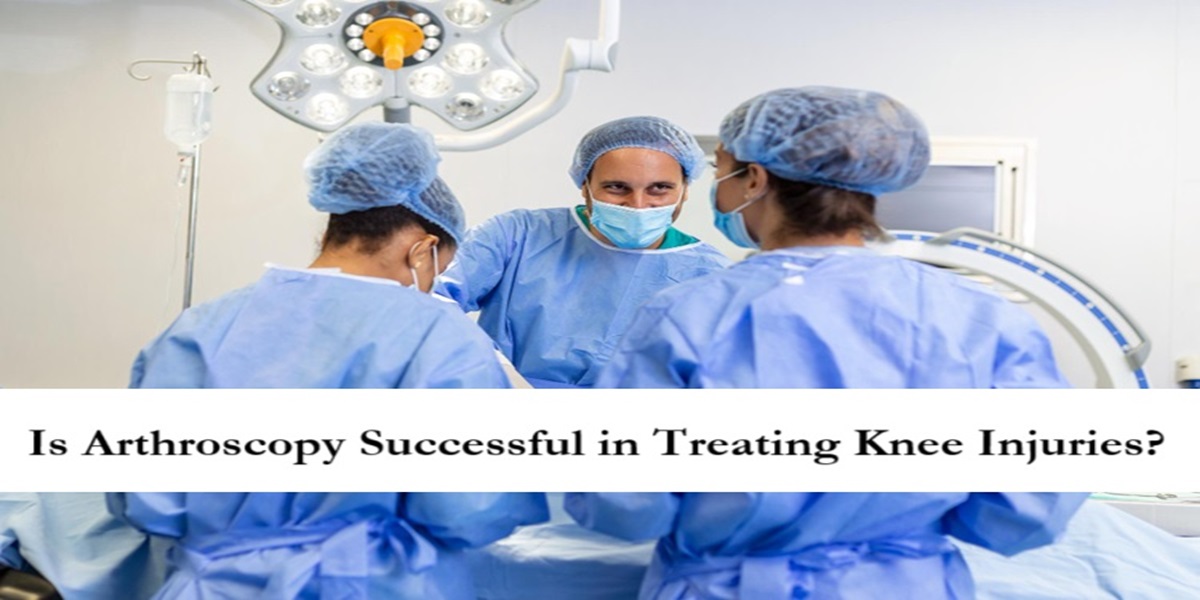The knees are the most crucial weight-bearing joints. They help us live an active and happy life. Are you suffering from chronic knee pain and the doctor has recommended arthroscopy? You might be feeling if it is a safe and successful procedure!
This article talks about arthroscopy in detail. Read this article till the end.
What Is Arthroscopy?
Arthroscopy is a minimally invasive surgery. It is performed using an arthroscope and other similar instruments. An arthroscope is a pencil-thin tool with a small video camera and light source attached to it. It helps look into a joint without making large cuts or incisions.
A surgeon uses arthroscopy either for diagnosis or treatment.
In case imaging tests haven’t helped diagnose joint conditions properly, a surgeon chooses arthroscopy for closer joint inspection. When arthroscopy is performed for diagnosis, it only involves making one hole or two in the joint and inserting an arthroscope inside.
When the arthroscope is inserted inside, it produces a video of the joint interiors and shows it on a large monitor screen, situated nearby in the surgery room.
Besides, when arthroscopy is used to treat a condition, a surgeon doesn’t just insert an arthroscope into the joint but one or more other similar instruments as well, for example, miniature scissors, etc.
The arthroscope helps look inside the joint while other tools are used to correct or fix the condition.
Based on which joint needs arthroscopy, there are many types of arthroscopy:
- Knee Arthroscopy
- Ankle Arthroscopy
- Wrist Arthroscopy
- Shoulder Arthroscopy
- Elbow Arthroscopy
- Hip Arthroscopy
This article talks about knee arthroscopy in detail.
Advantages of Arthroscopy
The following are the main benefits of arthroscopy.
Minimally Invasive: To perform this surgery, a surgeon doesn’t have to make large incisions over the knee joint. Instead, the procedure is done with the help of small incisions called portals.
Less Damage: Less invasive surgical procedures result in less damage to adjacent soft tissues. It leads to fewer surgical wounds.
Fast Recovery: Less damage leads to low inflammation and fast recovery.
Outpatient Procedure: The preceding benefits result in better rehabilitation. After arthroscopy, often patients can go home on the same day!
Is Arthroscopy Successful and Safe?
Yes, it is a highly successful and safe surgery. In fact, it is the safest form of joint surgery.
Arthroscopy is better than an open joint surgery! This is because arthroscopic surgeries don’t involve the following problems (or complications) postoperatively.
- Large wounds
- High inflammation
- Increased risk of infection
- Increased risk of blood clots
- Late recovery and rehabilitation
Refer to the following link to book your consultation with the best specialist: arthroscopic surgeon in Delhi.
Knee Parts & Injuries
The knee is made up of various parts, namely
- Bone Ends
- Articular Cartilage—soft tissue covers over bone ends
- Meniscus—a pad or cushion of soft tissue between two bones
- Ligaments—bands of soft tissue that connect bones to bones
- Tendons—bands of soft tissue that connect muscles to bones
- Muscles
- Bursa—a bag-like fluid-filled structure
- Synovium—a part of the knee that secretes a joint lubricant
These knee parts can get damaged due to external and internal causes.
Injuries, accidents or traumatic events count as external causes. For example, during sports, knee ligaments can be injured or torn into two, causing pain and mobility issues. It usually happens due to a sudden turning or twisting.
On the other hand, internal causes are rheumatoid arthritis, psoriasis, gout, osteoarthritis, etc. For example, RA or rheumatoid arthritis causes inflammation in the synovium. Inflamed synovium becomes thick and produces more lubricant than usual. An increase in this joint lubricant damage knee cartilage and bones.
Knee Conditions Treatable by Arthroscopy
With the help of arthroscopy, the following knee conditions can be treated:
- Ligament tears
- Meniscal injuries
- Cartilage damage
- Synovitis
- Other Knee Conditions
Arthroscopy enables a surgeon to perform various surgical procedures on the knee and provide treatment. These surgical procedures include:
- Removal
- Trimming
- Reconstruction
- Repair
- Restoration
Let’s understand these procedures performed with arthroscopy in detail.
Removal: If a patient has chronic inflammation in the knee synovium due to rheumatoid arthritis or any other reason, a surgeon will remove the synovium from the knee through arthroscopy. This is one example of removal surgery.
Furthermore, scar tissue release surgery is another example.
Trimming: If the knee meniscus has sustained a tear that can widen over time (Degenerative Injury), the surgeon will trim the edges of the tear to ensure it doesn’t become wider and bigger.
Reconstruction: A completely torn ligament is reconstructed with the help of arthroscopy. The most common example of reconstruction is ACL reconstruction surgery. If you want to know about the cost, visit the link: ACL surgery cost in Delhi.
Repair: Some ligament tears, meniscal injuries and other soft-tissue damage in the knee that are not severe can be treated with sutures or stitches. Such sutures are often made using arthroscopy. The procedure is known as repair.
Restoration: Knee cartilage can sustain isolated cartilage defects. This means the entire cartilage isn’t damaged but only some of its parts. Such cartilage damage can be treated with arthroscopy and the treatment is known as knee cartilage restoration.
Diagnosis
Before arthroscopy, orthopedic doctors can examine the knee joint with any of the following imaging tests.
- X-ray
- MRI
- CT Scan
An X-ray test helps learn about knee bone conditions. However, X-rays don’t tell anything about the conditions of soft tissues in the knee. So, for a comprehensive and detailed examination, an MRI test is ordered!
If an MRI isn’t suitable, a CT scan is preferred. When a patient has a metal implant within the body, an MRI test can interfere with the same. Thus, MRI isn’t suitable for such a patient. That is why a CT scan is used.
Conclusion
Yes, it is a safe procedure. It is a less invasive approach. In other words, with the help of arthroscopy, the surgeon can treat a knee condition without making large cuts or incisions.
Thus, arthroscopy ensures fewer surgical wounds and therefore less recovery time. You will be able to get back to your day-to-day activity fast.
Thus, in short, knee arthroscopy is the safest form of joint surgery. It can treat various knee conditions and injuries successfully.




